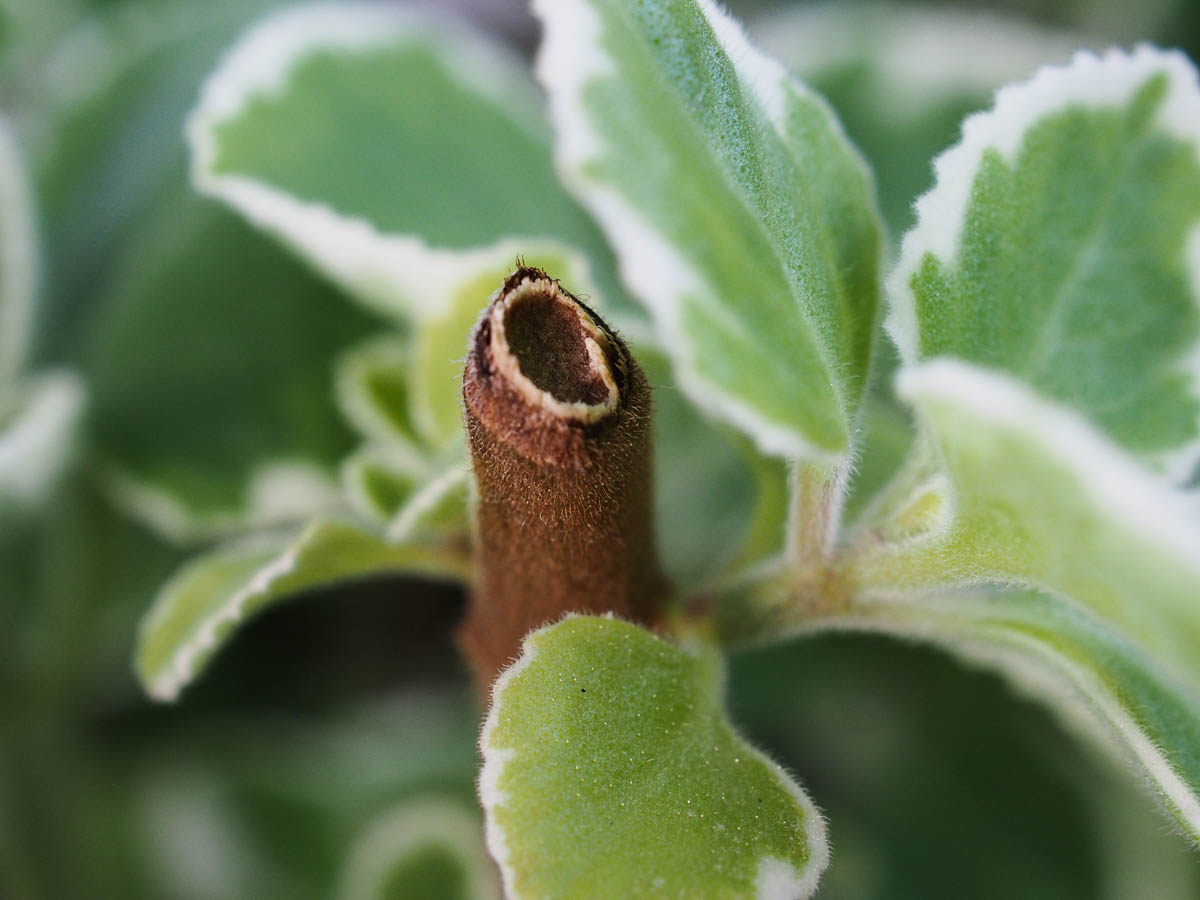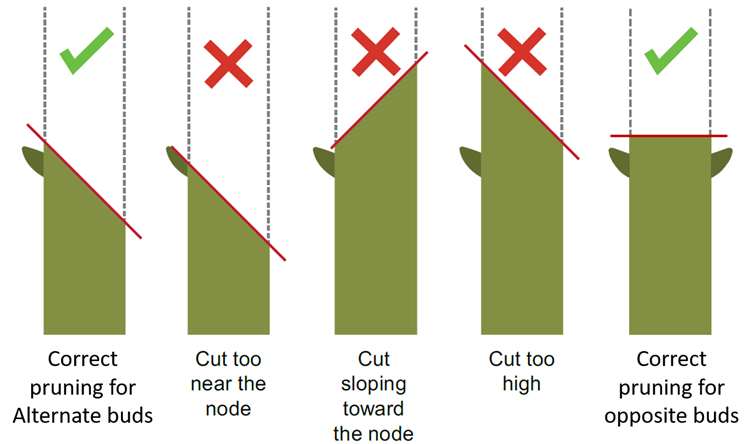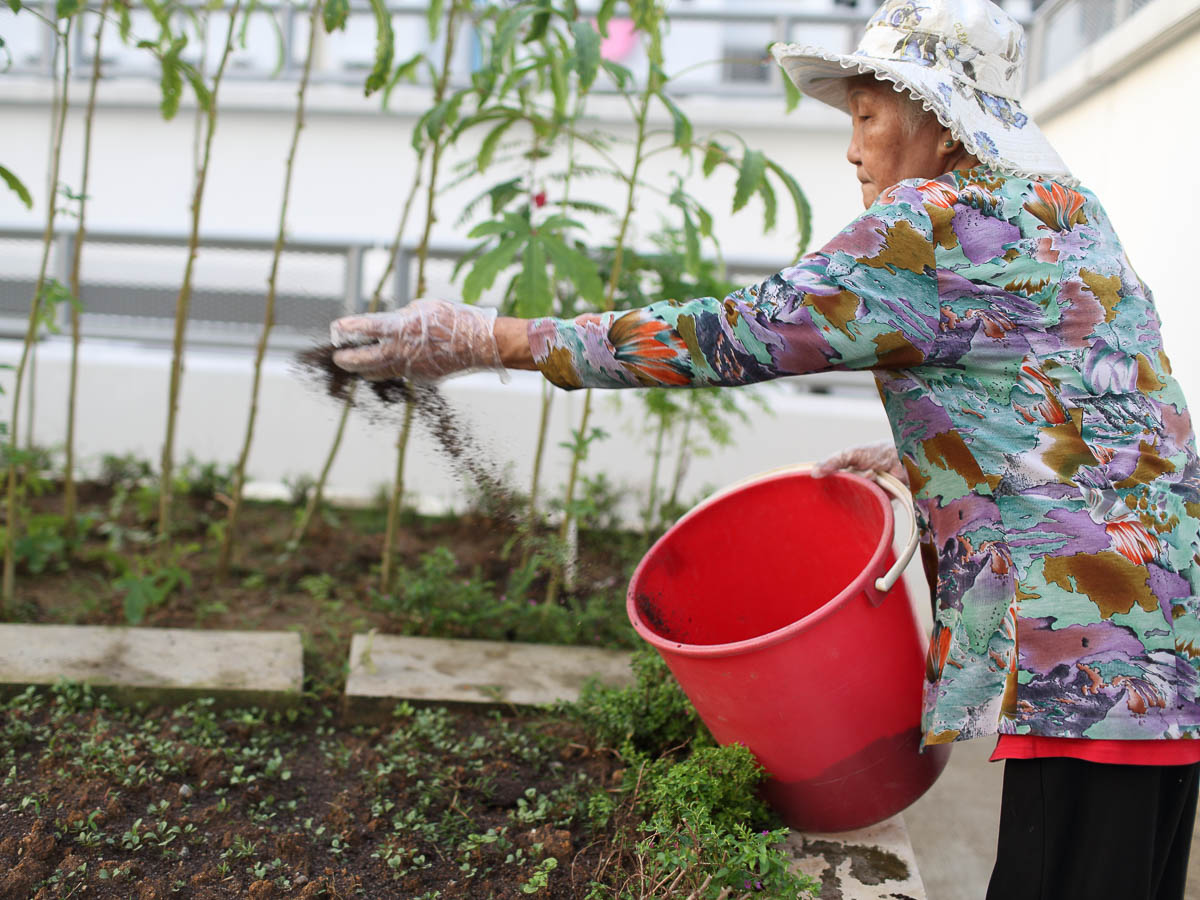Pruning
What is pruning?
.jpg)
Pruning is the act of cutting off plant parts to maintain the shape, size, and health of a plant. In addition to removing dead, diseased, and pest-infested plant parts, regular pruning will encourage new growth and promote bushiness. It is an important part of plant care for both herbaceous and woody plants, and should be done as part of regular garden maintenance.
What is Hard Pruning?

Hard pruning is where large proportion of the main stems are pruned off, usually to rejuvenate the plant by encouraging new growth of healthier and more vigorous stems. This method of pruning is not suitable for all types of plants. It works best on multi-stemmed, woody shrubs and trees, or plants with very rapid growth.
Some plants that benefit from regular hard pruning are:
- Brazilian Tea (Stachytarpheta jamaicensis)
- Curry Leaf Plant (Murraya koenigii)
- Laksa (Persicaria ordorata)
- Red Leea (Leea rubra)
- Sissoo Spinach (Alternanthera sissoo)
- Spearmint (Mentha spicata)
- White Mulberry (Morus alba)
How do I hard prune my plant?

Depending on how the buds are arranged on the plant, different methods of pruning cut are used. In the figure above, a slanted cut above and away from the bud is made for buds that are arranged alternately. For buds that are arranged oppositely, a straight cut is made above it.
.jpg)
During hard pruning, main stems of the plant are cut back till about 15-30 cm from the ground, or just above the 3rd lowest node on the plant.
What should you do after hard pruning?

After a hard prune, the plants need some tender loving care. Ensure that the plant is well watered and fertilised. A layer of compost can be applied with some nitrogen-rich organic fertiliser to provide a boost of nutrients that the plant needs to grow back. Lastly, keep a close eye on the areas that you have cut back – this is to make sure that any early onset of infection or infestation can be caught early and treated.
Pruning tips
- Always disinfect pruning equipment before and after use
- Prune during the wet season or after rain to reduce stress on the plant
- Use a pair of sharp secateurs or pruners to make clean, straight cuts as jagged cuts and torn branches make the plant more prone to disease

